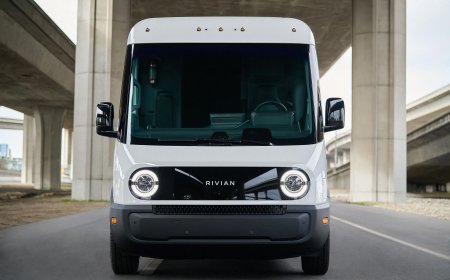The Startup That Could Break Nvidia’s Grip: Modular Wants to Make AI Work Everywhere
Nvidia's dominance in AI compute is under serious threat from Modular, a startup that recently secured $250 million at a $1.6 billion valuation. This analysis details how Modular's MAX Engine and Mojo programming language function as an "AI Hypervisor," decoupling AI models from proprietary hardware like CUDA. Learn how this solution enables seamless, high-performance deployment across all vendors (Nvidia, AMD, custom silicon) and why it's poised to become the universal, hardware-agnostic foundation for the next era of AI, saving enterprises billions in compute costs and challenging the hardware lock-in paradigm.

For years, the world of artificial intelligence has been dominated by one name: Nvidia. If you wanted to train large models, run inference at scale, or push the boundaries of AI, you needed their powerful GPUs, tightly coupled with their proprietary CUDA software stack. That’s why Nvidia’s stock has exploded, and why data centers worldwide are scrambling for every last H100 and A100 chip.
But a bold startup called Modular believes it’s time to fundamentally rethink how AI works. Their mission? To make AI run seamlessly, and with maximum performance, across any hardware vendor — whether it’s Nvidia, AMD, Intel, ARM, or the custom silicon built by hyperscalers.
If they succeed, Modular could unlock a new era of AI accessibility, save enterprises billions, and finally break the stranglehold of single-vendor ecosystems.
What Is Modular? The Universal Adapter
Founded by industry heavyweights Chris Lattner (creator of Swift and LLVM) and Tim Davis, Modular is a U.S.-based startup that has been aggressively attracting capital and talent. Its valuation surged to $1.6 billion in September 2025 following a fresh $250 million funding round, validating its position as one of the most disruptive players in AI infrastructure.
Modular’s flagship offering is the Modular AI Engine, which functions as an "AI Hypervisor." This software layer sits between AI models and the physical hardware. Instead of developers rewriting code for CUDA (Nvidia), ROCm (AMD), or Metal (Apple), Modular—powered by its next-generation language, Mojo—translates and optimizes workloads to run efficiently anywhere.
It is the universal adapter for the fragmented world of AI compute.
The Problem: The Cost of Hardware Lock-In
AI development today is plagued by hardware lock-in, driven by Nvidia’s proprietary software moat, CUDA. The fragmentation is severe:
-
Developing for Nvidia requires CUDA.
-
Switching to AMD means refactoring code for ROCm.
-
New accelerators (like those from Groq or custom cloud silicon) all require unique, time-consuming integration.
This friction wastes time, locks companies into a single, often supply-constrained vendor, and stifles rapid innovation. Modular aims to eliminate this by making AI frameworks—both PyTorch and TensorFlow—truly hardware-agnostic.
The Modular Advantage: Performance and Portability
Modular is generating intense hype because its solution doesn’t just promise portability—it promises superior performance. Its core products, the MAX Engine (for inference) and the Mojo language, are designed from the ground up to utilize hardware features often hidden even from CUDA.
-
Single API: Developers write once, then deploy seamlessly across GPUs, CPUs, and accelerators from every major vendor.
-
Performance Leadership: Benchmarks suggest the MAX Engine delivers performance gains of 20% to 50% over leading inference servers like vLLM on identical hardware. Some partners report 70% faster response times and 80% cost reductions.
-
Decoupling Power: Modular has demonstrated it can meet or beat CUDA's performance on Nvidia H100 chips, effectively neutralizing Nvidia’s software advantage and enabling direct competition from other chipmakers.
-
Enterprise Adoption: Major cloud providers like AWS and Oracle are already partnering with Modular, using the platform to offer their customers vendor-agnostic, cost-optimized AI services.
Why It Matters: Shifting Power in 2025
The AI industry is at a crossroads defined by soaring compute costs and extreme hardware scarcity. Hyperscalers are developing custom silicon (TPUs, Trainium, Maia), and enterprises are desperately seeking alternatives to Nvidia's expensive and limited supply chain.
By providing a high-performance "AI hypervisor," Modular offers the strategic flexibility the industry craves. Its platform allows companies to mix and match hardware—say, using affordable AMD GPUs for certain workloads and Nvidia for others—without the paralyzing friction of code rewrite. The recent $250 million funding is earmarked to expand this capability from its current focus on AI inference into the even more demanding AI training market.
Modular’s vision of AI that "just works everywhere" promises to save enterprises billions in compute costs and democratize access by making AI development independent of any single hardware monopoly.
Challenges and the Legacy Analogy
Modular faces the monumental challenge of displacing CUDA, which has 15+ years of developer investment. Nvidia won't cede control easily. Maintaining peak performance across the dozens of different chip architectures—and the new ones launching every year—is a never-ending, engineering-intensive task.
Still, the potential upside is industry-defining.
Modular is not just trying to build a new tool; it is aiming to become the foundational layer of the entire AI ecosystem. By acting as the vendor-neutral "AI hypervisor," Modular is positioning itself to be the VMware of the AI Era—a universal standard that abstracts away hardware complexity, shifts power back to the developers and enterprises, and rewrites the rules of the game.
For Nvidia, this is the most credible software disruption they have faced in a generation.
What's Your Reaction?
 Like
0
Like
0
 Dislike
0
Dislike
0
 Love
0
Love
0
 Funny
0
Funny
0
 Angry
0
Angry
0
 Sad
0
Sad
0
 Wow
0
Wow
0

































